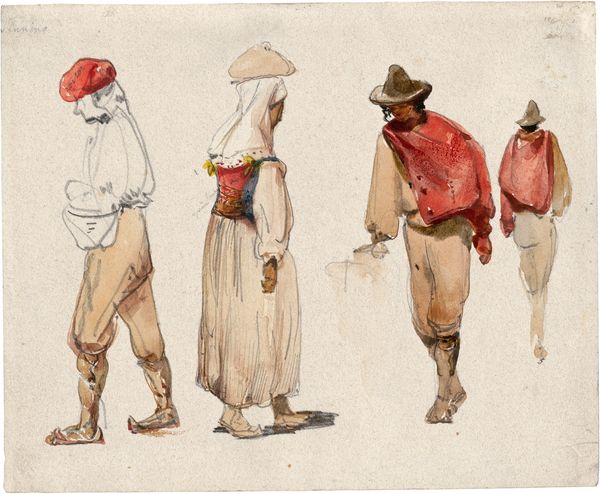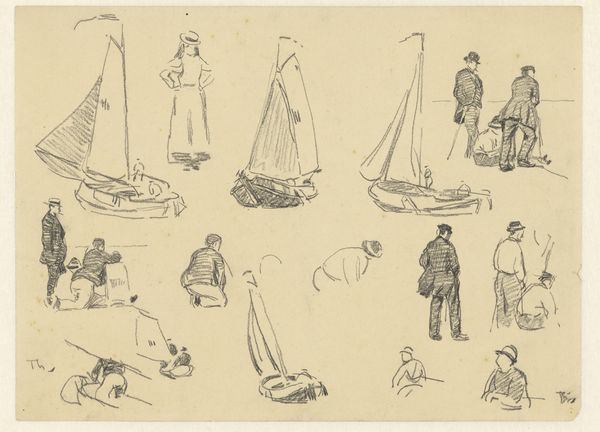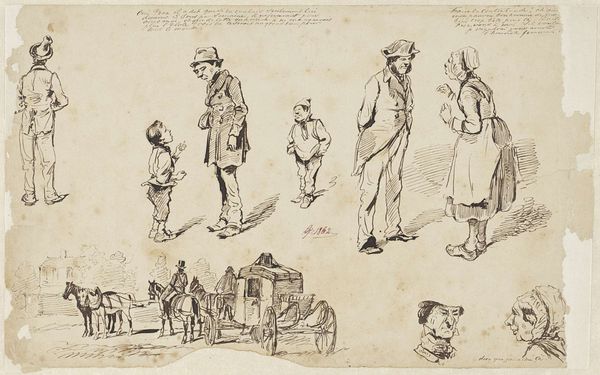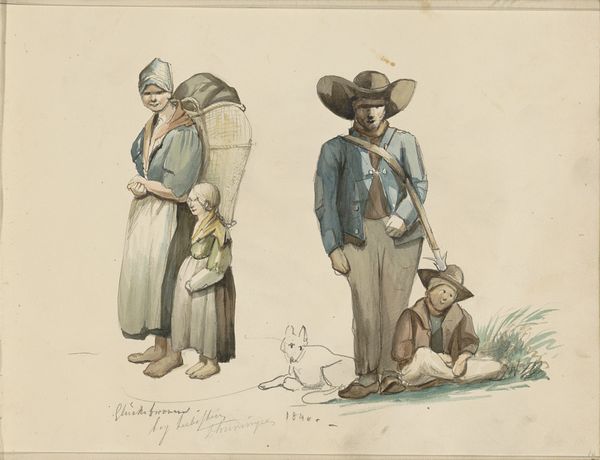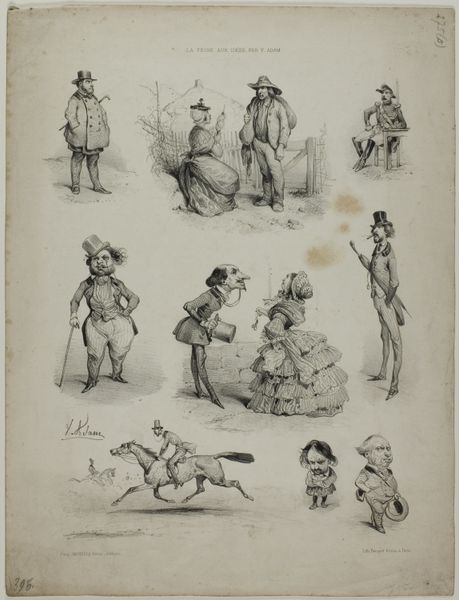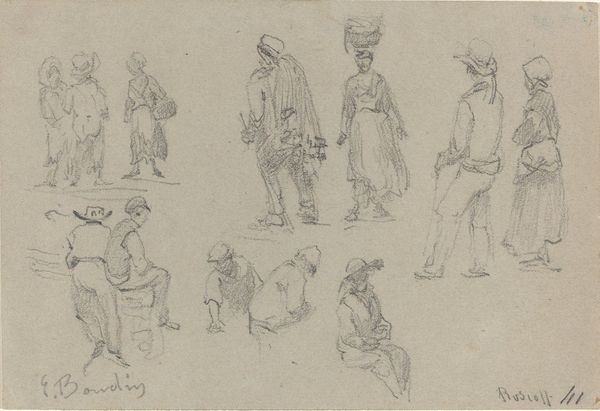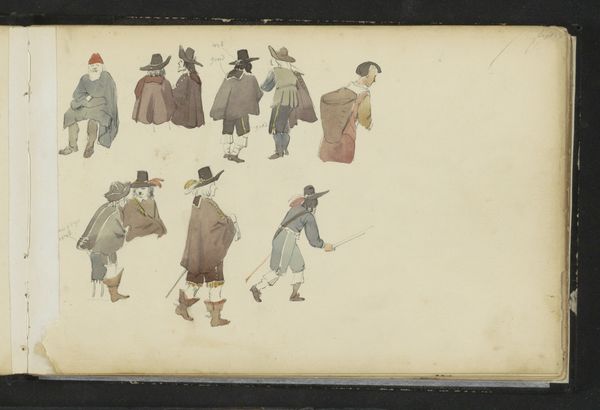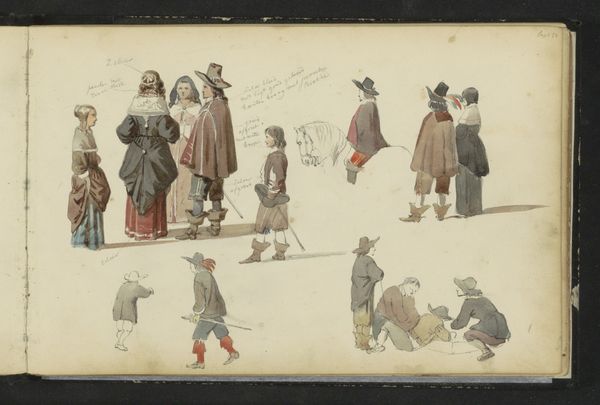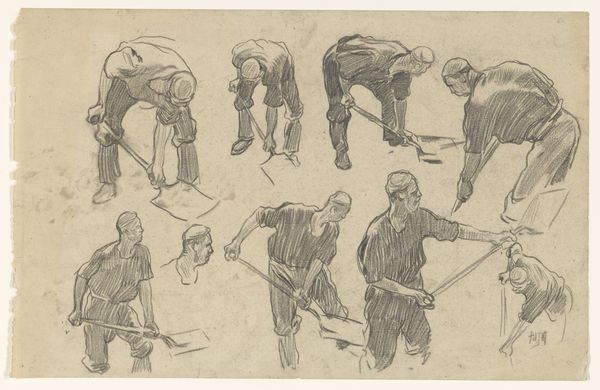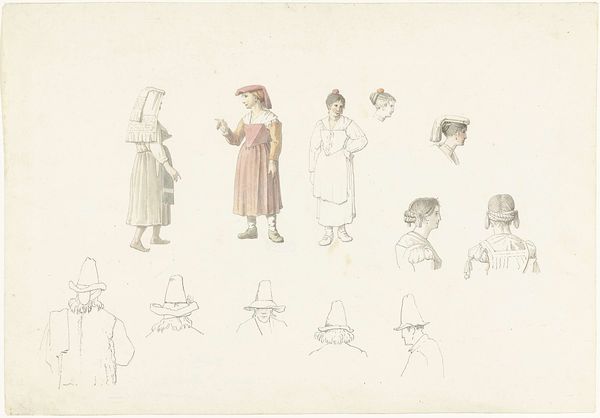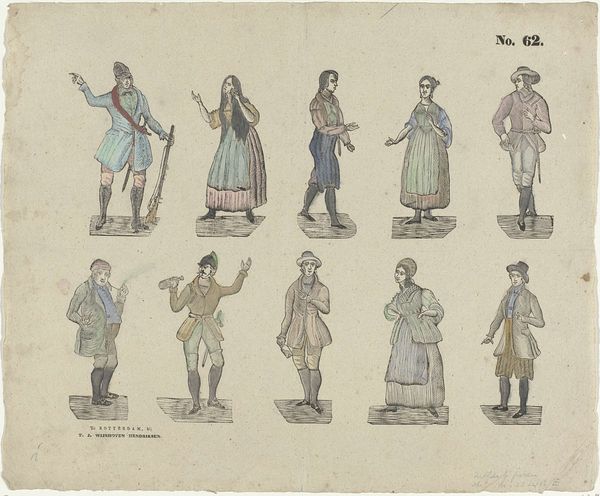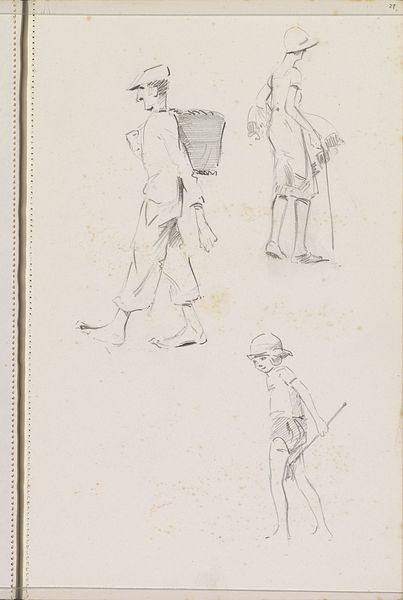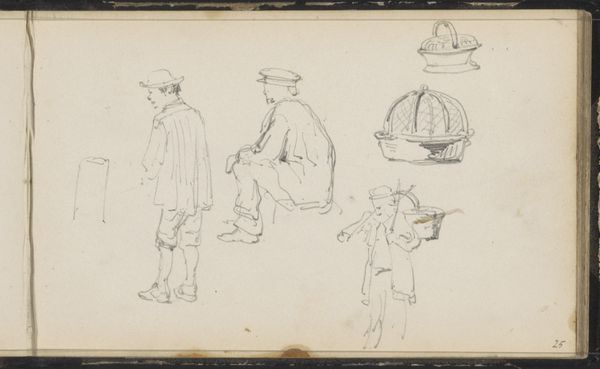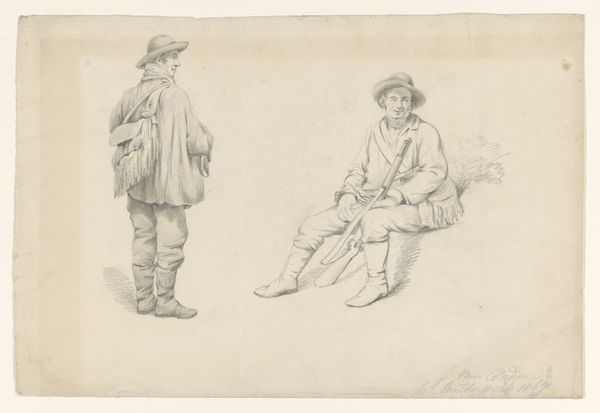
Sketches of Fishermen and Children at Hastings 1866
drawing, print, plein-air, paper, pencil, graphite
portrait
drawing
impressionism
plein-air
paper
personal sketchbook
pencil
graphite
genre-painting
Dimensions: 251 × 353 mm
Copyright: Public Domain
Editor: This is "Sketches of Fishermen and Children at Hastings," made with pencil and graphite on paper in 1866 by George Robert Lewis. It feels like a glimpse into everyday life, a sort of visual record of the people and materials that constituted this seaside town. What can you tell me about it? Curator: Notice the primacy of materials in this "sketchbook" page: paper, pencil, graphite. These are not just tools but mediators of experience. Lewis's rapid notations describe not just forms, but the labor invested in fishing, the weight of baskets, the texture of clothes. This sheet emphasizes the raw, unprocessed realities of working-class life, stripping away romantic idealizations. How do you think its "genre painting" style intersects with its focus on labor and material reality? Editor: Well, genre painting often focuses on idealized scenes, but here, the quick sketches and visible process emphasize the act of observing and recording daily life. It feels less staged, more about the direct relationship between the artist, his materials, and his subjects. It feels like a genuine attempt at documentation. Curator: Precisely. It's a dialogue between the artist's hand, the available materials, and the community's lived reality. Each stroke, each shading, speaks to the socio-economic conditions that shaped their world. The paper supports this raw depiction, an affordable medium capturing the essence of a working community. Do you think this emphasis on process challenges traditional notions of "high art"? Editor: Absolutely, it shifts the focus from idealized beauty to the immediate experience of creation and the conditions of the subjects. The labor and the raw materials become as important as the final image, bringing value to what's being recorded, and what that value says about those depicted. Curator: Indeed. The intersection of material and social is key. Thanks for opening my eyes to the human value of the image! Editor: I agree, and it gives so much depth and relatability when the raw realities of it are viewed.
Comments
No comments
Be the first to comment and join the conversation on the ultimate creative platform.
